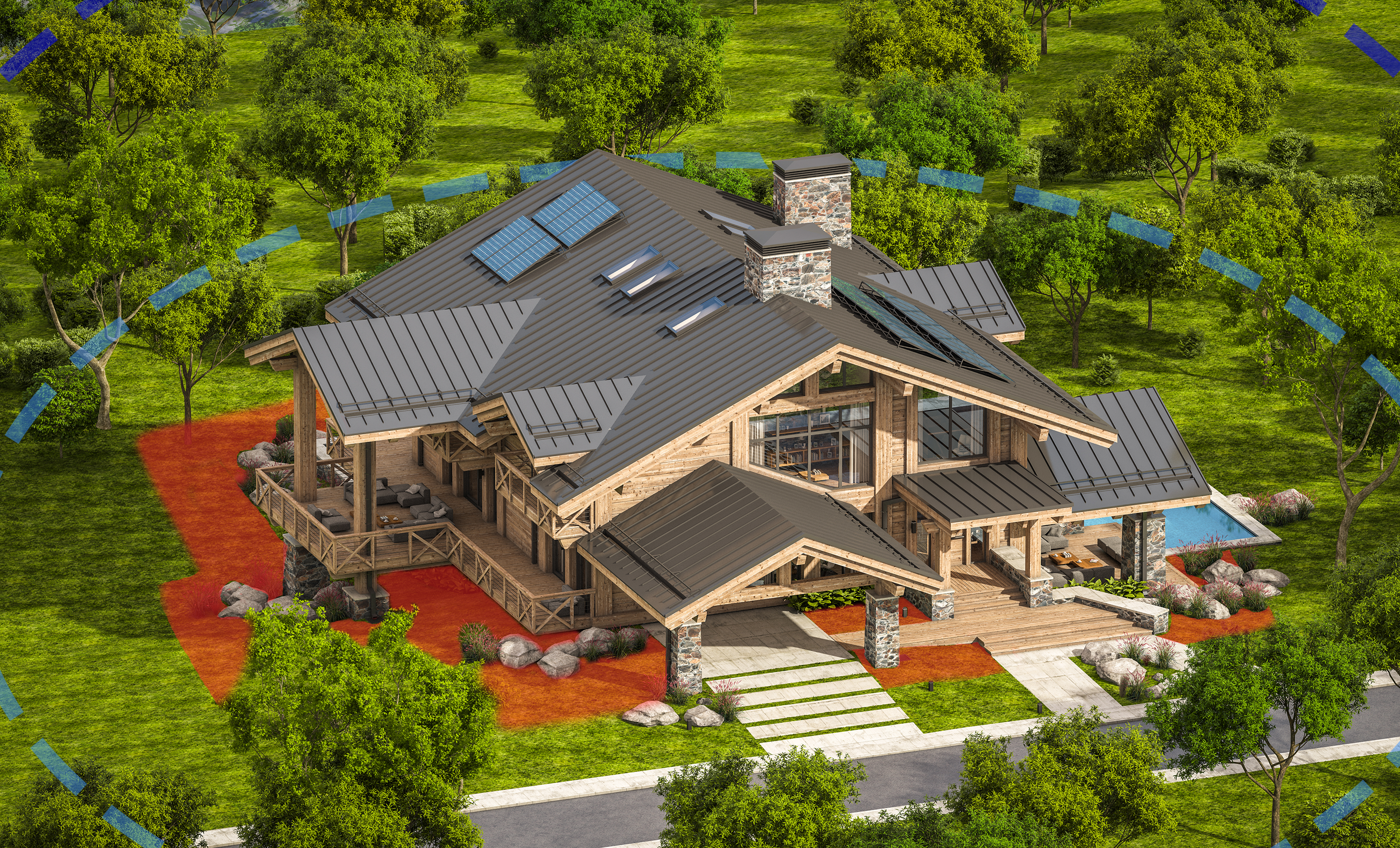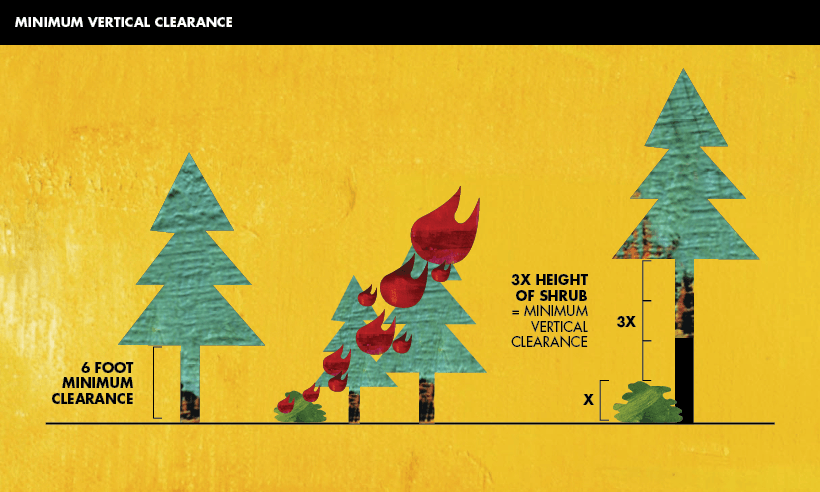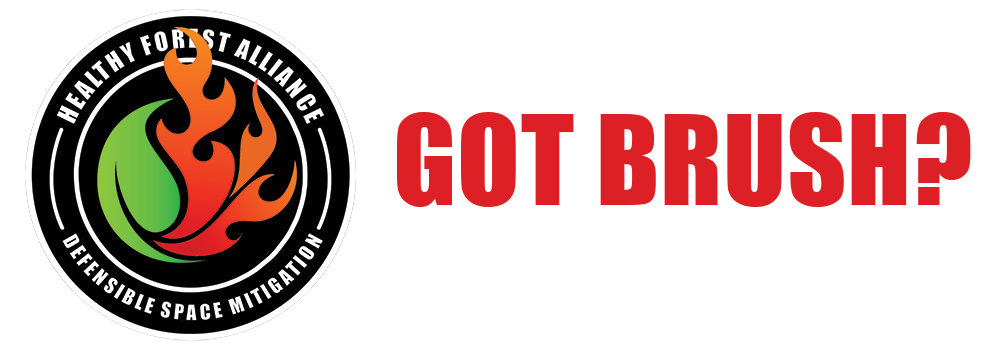New Wildland Code in Washoe County
On Tuesday May 12th the Washoe County Board of County Commissioners (BCC) adopted an updated wildland code impacting homeowners, among others, especially those in wildfire risk areas.
Amending Chapter 60 of the Washoe County Code, the BCC adopted the 2018 edition of the International Wildland-Urban Interface Code (IWUIC), as amended.
The IWUIC addresses, among other obligations, requirements for homeowners to maintain specified distances between homes (structures) and fuels (non-fire resistive vegetation). Those distances are based on what ‘wildfire hazard zone’ your home is in. Those zones are either ‘moderate’, ‘high’ or ‘extreme’.
For Washoe County, a map showing those zones can be found here: Is My Home In A High Fire Zone?
Note: red indicates “extreme hazard”, orange “high”, green “moderate”, and blue “low”.
For homes in a ‘moderate’ wildfire hazard zone, a 30ft wide buffer between a home and hazardous vegetation is required. In a ‘high’ zone that distance is 50ft and in an ‘extreme’ zone, it is 100ft.
Per Section 603.2.2 of the code, ‘Trees are allowed with the ‘defensible space’ provided that the horizontal distance between crowns of adjacent trees and crowns of trees and structures, overhead electrical facilities or unmodified fuel is not less than 10 feet’.
Homeowners and, in some limited cases, HOAs are responsible for maintaining these distances.
The IWUIC Section 607.1 further provides that ‘firewood shall not be stored in unenclosed spaces beneath buildings, or on decks or under eaves, canopies, or other projections or overhangs’.
As wildfire season will start soon, prudent prevention is paramount.
ADDENDUM
These requirements can be legally enforced. Per the Washoe County Code (WCC) Sec. 60.100.050, up to $1,000 per occurrence and/or six months in jail.
Also, the Fire District can ask the DA to seek a court order for compliance, with penalties up to and including eviction of the occupant (Sec. 60.110.4.6).
While not a local case, I know of instances where a County has declared such conditions to be a ‘nuisance’ and, with a warrant, enter the property and abate the hazard with the cost to do so being entered as a lien on the property.
Washoe County has a ‘Nuisance Code’, see WCC Chap. 50.
Enforcement usually starts with educating the offender as to the hazard and the need for abatement, followed by an ‘order to abate’.
Proactive enforcement of this code (2012 edition adopted in 2014) historically in the TMFPD has been in response to a complaint, typically from a neighbor whose property is threatened by hazardous vegetation his neighbor has failed to abate.
Real world examples of the failure to abate were evident in the 2007 Angora Fire in South Lake Tahoe, see https://en.wikipedia.org/wiki/Angora_Fire.
One homeowner, who had ensured his home had the requisite ‘defensible space’, nonetheless saw his home burn to the ground as neither of his adjacent neighbors had done any fuel reduction. The fire swept thru the neighborhood and some 250 homes were lost.
What Is Defensible Space?
Defensible space is essential to improve your home’s chance of surviving a wildfire.
In UC ANR Publication 8695, Valachovic, Quarles and Swaim describe Defensible space as a “term used to describe actions to take in zones around a home that involve careful selection, location and maintenance of vegetation and other combustible materials on a property. The goal of defensible space is to
- eliminate pathways for a wildfire to burn directly to the home
- reduce radiant heat exposures
- reduce the potential for embers to ignite vegetation and other combustible materials adjacent to the home
- provide a safe place for fire personnel to defend the home and allow safe routes for evacuation.”
Defensible space is the buffer you create between a building on your property and the grass, trees, shrubs, or any wildland area that surround it. Defensible space will help slow or stop the spread of wildfire and protect your home from catching fire – either from direct flame contact or radiant heat. Defensible space is also important to help protect firefighters when they are defending your home.
Your home may be the most valuable investment you ever make. If you live in a high-risk fire hazard area, protect against the chance of losing that investment by creating defensible space and hardening your home with fire-resistant construction materials and design.
Creating defensible space does not mean you need a ring of bare dirt around your home! Through proper planning, you can have both a beautiful landscape and a fire safe home.
Valachovic, Quarles and Swaim further state that “implementing an effective defensible space strategy requires that overgrown, dense, or unmaintained vegetation creates significant vulnerabilities and that it can enable fire to burn to the home through several fire-spread scenarios, including ember ignition of vegetative debris on the ground and ember ignition of vegetative debris on roofs. Ignition of outbuildings can also occur due to emergency ignition of nearby combustibles. These fire=spread scenarios can also result in radiant heat or flame contact exposures to the home. Additional fuel reduction strategies, such as reducing vegetation along access routes or limbing trees to allow for easier passage of fire equipment, should be implemented to create safe routes for evacuation.”
Keep your property lean and green to help protect your family and home.
Defensible space, coupled with home hardening, is essential to improve your home’s chance of surviving a wildfire. Defensible space is the buffer you create between a building on your property and the grass, trees, shrubs, or any wildland area that surround it. This space is needed to slow or stop the spread of wildfire and it helps protect your home from catching fire—either from embers, direct flame contact or radiant heat. Proper defensible space also provides firefighters a safe area to work in, to defend your home.

Defensible Space Zones
Zones 1 and 2 currently make up the 100 feet of defensible space required by law. Assembly Bill 3074, passed into law in 2020, requires a third zone for defensible space. This law requires the Board of Forestry and Fire Protection to develop the regulation for a new ember-resistant zone (Zone 0) within 0 to 5 feet of the home by January 1, 2023. The intensity of wildfire fuel management varies within the 100-foot perimeter of the home, with more intense fuels’ reduction occurring closer to your home. Start at the home and work your way out to 100 feet or to your property line, whichever is closer.

Zone 0 – Ember-Resistant Zone
Zone 0 extends 5 feet from buildings, structures, decks, etc.
The ember-resistant zone is currently not required by law, but science has proven it to be the most important of all the defensible space zones. This zone includes the area under and around all attached decks, and requires the most stringent wildfire fuel reduction. The ember-resistant zone is designed to keep fire or embers from igniting materials that can spread the fire to your home. The following provides guidance for this zone, which may change based on the regulation developed by the Board of Forestry and Fire Protection.
- Use hardscape like gravel, pavers, concrete and other noncombustible mulch materials. No combustible bark or mulch
- Remove all dead and dying weeds, grass, plants, shrubs, trees, branches and vegetative debris (leaves, needles, cones, bark, etc.); Check your roofs, gutters, decks, porches, stairways, etc.
- Remove all branches within 10 feet of any chimney or stovepipe outlet
- Limit plants in this area to low growing, nonwoody, properly watered and maintained plants
- Limit combustible items (outdoor furniture, planters, etc.) on top of decks
- Relocate firewood and lumber to Zone 2
- Replace combustible fencing, gates, and arbors attach to the home with noncombustible alternatives
- Consider relocating garbage and recycling containers outside this zone
- Consider relocating boats, RVs, vehicles and other combustible items outside this zone
Zone 1 – Lean, Clean and Green Zone
Zone 1 extends 30 feet from buildings, structures, decks, etc. or to your property line, whichever is closer.
- Remove all dead plants, grass and weeds (vegetation).
- Remove dead or dry leaves and pine needles from your yard, roof and rain gutters.
- Remove branches that hang over your roof and keep dead branches 10 feet away from your chimney.
- Trim trees regularly to keep branches a minimum of 10 feet from other trees.
- Relocate wood piles to Zone 2.
- Remove or prune flammable plants and shrubs near windows.
- Remove vegetation and items that could catch fire from around and under decks, balconies and stairs.
- Create a separation between trees, shrubs and items that could catch fire, such as patio furniture, wood piles, swing sets, etc.
Zone 2 – Reduce Fuel Zone
Zone 2 extends from 30 feet to 100 feet out from buildings, structures, decks, etc. or to your property line, whichever is closer.
- Cut or mow annual grass down to a maximum height of 4 inches.
- Create horizontal space between shrubs and trees. (See diagram)
- Create vertical space between grass, shrubs and trees. (See diagram)
- Remove fallen leaves, needles, twigs, bark, cones, and small branches. However, they may be permitted to a depth of 3 inches.
- All exposed wood piles must have a minimum of 10 feet of clearance, down to bare mineral soil, in all directions.
Zone 1 and 2
- “Outbuildings” and Liquid Propane Gas (LPG) storage tanks shall have 10 feet of clearance to bare mineral soil and no flammable vegetation for an additional 10 feet around their exterior.
Local Ordinance
Many local government agencies have local ordinances for defensible space or weed abatement. These local ordinances will often be more stringent than the State’s minimum requirements listed above (e.g., San Diego County requires 50 feet of clearance in Zone 1). Check with your local fire department or fire protection district for any additional defensible space or weed abatement ordinance requirements.
Plant and Tree Spacing
The spacing between grass, shrubs, and trees is crucial to reduce the spread of wildfires. The spacing needed is determined by the type and size of brush and trees, as well as the slope of the land. For example, a property on a steep slope with larger vegetation requires greater spacing between trees and shrubs than a level property that has small, sparse vegetation.
Vertical Spacing
Remove all tree branches at least 6 feet from the ground.
Allow extra vertical space between shrubs and trees. Lack of vertical space can allow a fire to move from the ground to the brush to the treetops like a ladder. This leads to more intense fire closer to your home.
To determine the proper vertical spacing between shrubs and the lowest branches of trees, use the formula below.

Example: A five-foot shrub is growing near a tree. 3×5 = 15 feet of clearance needed between the top of the shrub and the lowest tree branch.
Horizontal Spacing
Horizontal spacing depends on the slope of the land and the height of the shrubs or trees. Check the chart below to determine spacing distance.

